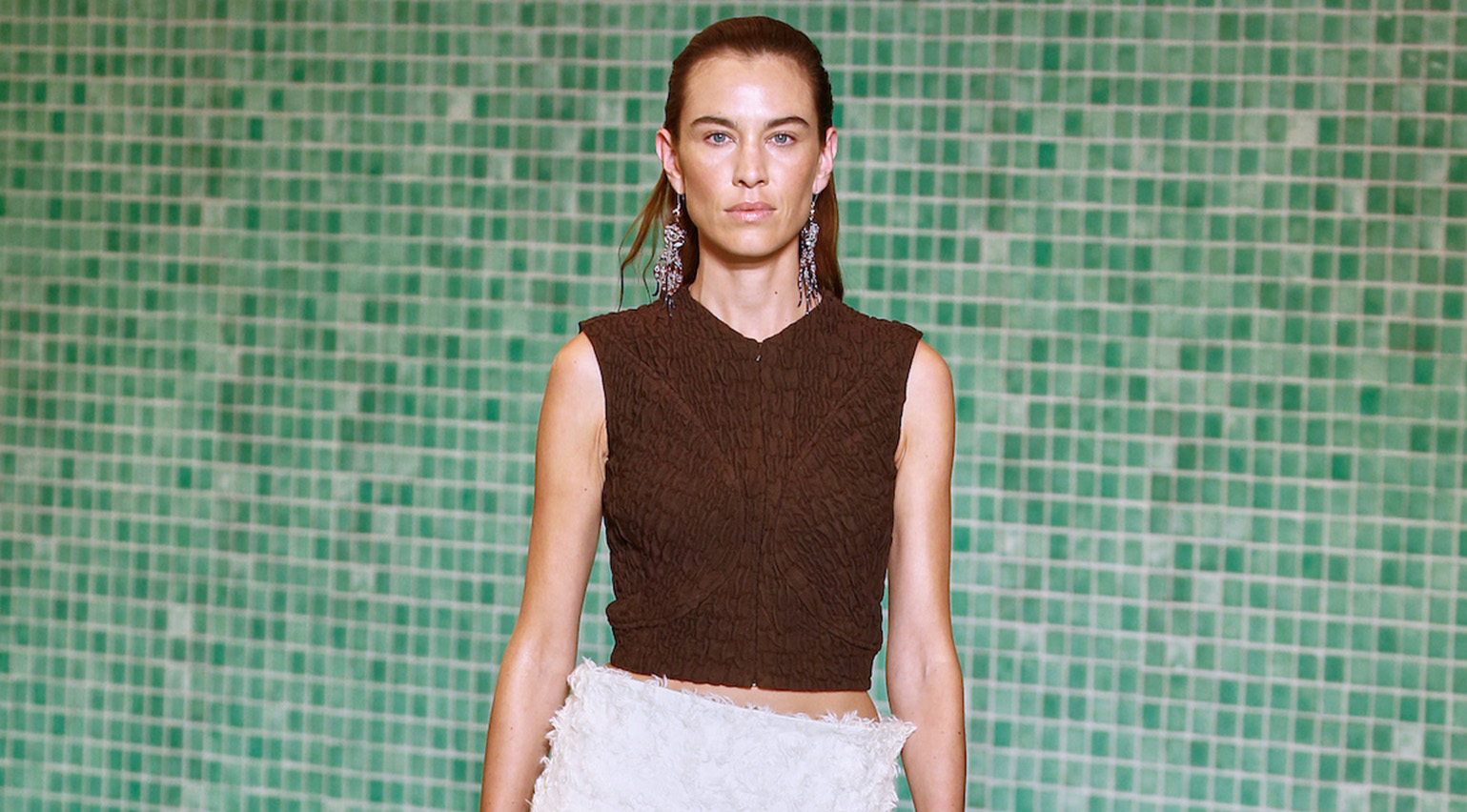
The arrival of New York Fashion Week S/S 2025 heralds the beginning of a month-long stint of runway shows, which will continue through September with stops in London and Milan, before culminating in Paris with a nine-day schedule ending on 1 October 2024. By then, designers will have offered a vision for the season ahead, including a roster of creative directors making their anticipated debuts – most notably ex-Gucci designer Alessandro Michele, who will make his mark on Roman house Valentino with a show in Paris at the end of September.
Before all that, though, New York Fashion Week – which concluded yesterday (10 September 2024) – made for a buzzy opening act. Beginning proceedings was Pieter Mulier’s Alaïa, transplanting from Paris to New York for a show on the evening of 6 September at New York’s Guggenheim Museum, seeing the designer play ode to the ease and fluidity of American sportswear, referencing figures like Claire McCardell, Halston and Charles James. Also shifting cities was COS – the London-based label returned to New York after a show last season at Rome’s Corsie Sistine – and Off-White, which showed at Brooklyn Bridge Park, moving from its usual slot on the Paris schedule.
Elsewhere, Tory Burch continued her Torynaissance – we explored Burch’s creative renaissance and reach for a younger wave of consumers in the August 2024 ‘Creative America’ issue of Wallpaper* – and Willy Chavarria presented a collection titled ‘América’ which celebrated immigrant workers against the backdrop of the upcoming presidential election. Rounding out the schedule were shows from Coach, Michael Kors and Tommy Hilfiger, alongside rising names Zankov and Diotima.
Here, reporting from New York, Wallpaper* fashion features editor Jack Moss picks the best of New York Fashion Week S/S 2025.
The best of New York Fashion Week S/S 2025
COS
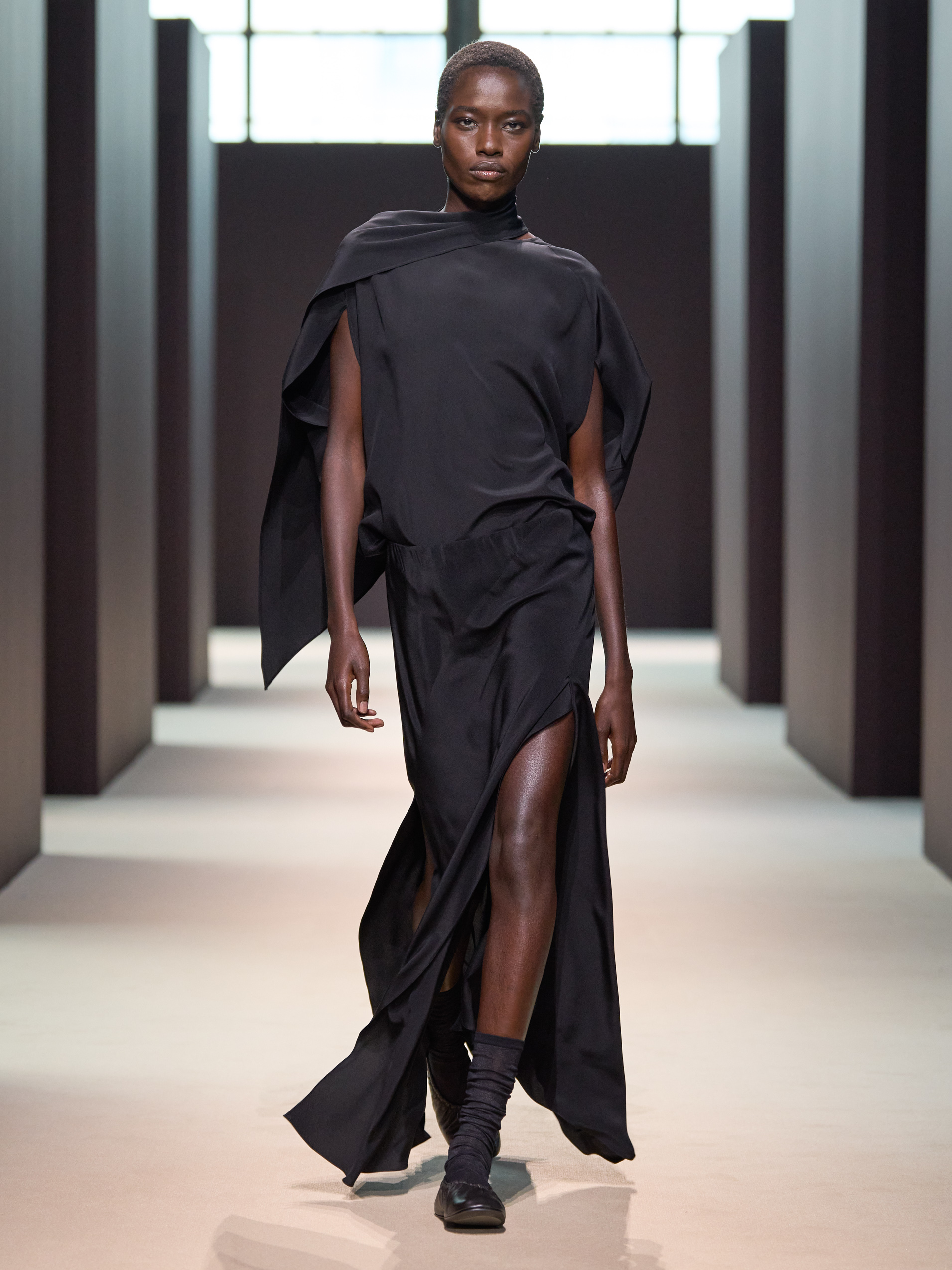
Last season, London-based label COS selected Rome’s Corsie Sistine, part of the 15th-century Santo Spirito, Europe’s oldest hospital, for its summer show. For A/W 2024, it was a return to New York and an altogether less ornate – though no less dramatic – industrial warehouse at Brooklyn’s Navy Yard, accessed by guests via a specially chartered ferry from Manhattan’s Southport Pier. The cavernous space had been transformed for the occasion by Bureau Betak with a series of monolithic black blocks, around which models wove in front of guests including Chloë Sevigny, Emily Ratajkowski and Colman Domingo (a show of strength from the H&M-owned brand, which VIP wise more than competed with the city’s big-name designers). Comprising 43 looks – including the latest COS Atelier collection, inspired by contemporary dance and ballet – this was a sleek and desirable outing from the label, honing time-honoured COS staples (enveloping wool overcoats, voluminous trousers, sinuous ribbed knits) alongside more unexpected design flourishes. These included a chunky shearling parka with brown-cow print, a tabard-style top with richly beaded collar, and the trio of draped eveningwear looks which closed the show. They felt like fresh territory for the label, which as it approaches nearly two decades in business feels like it is having something of a renaissance.
Michael Kors
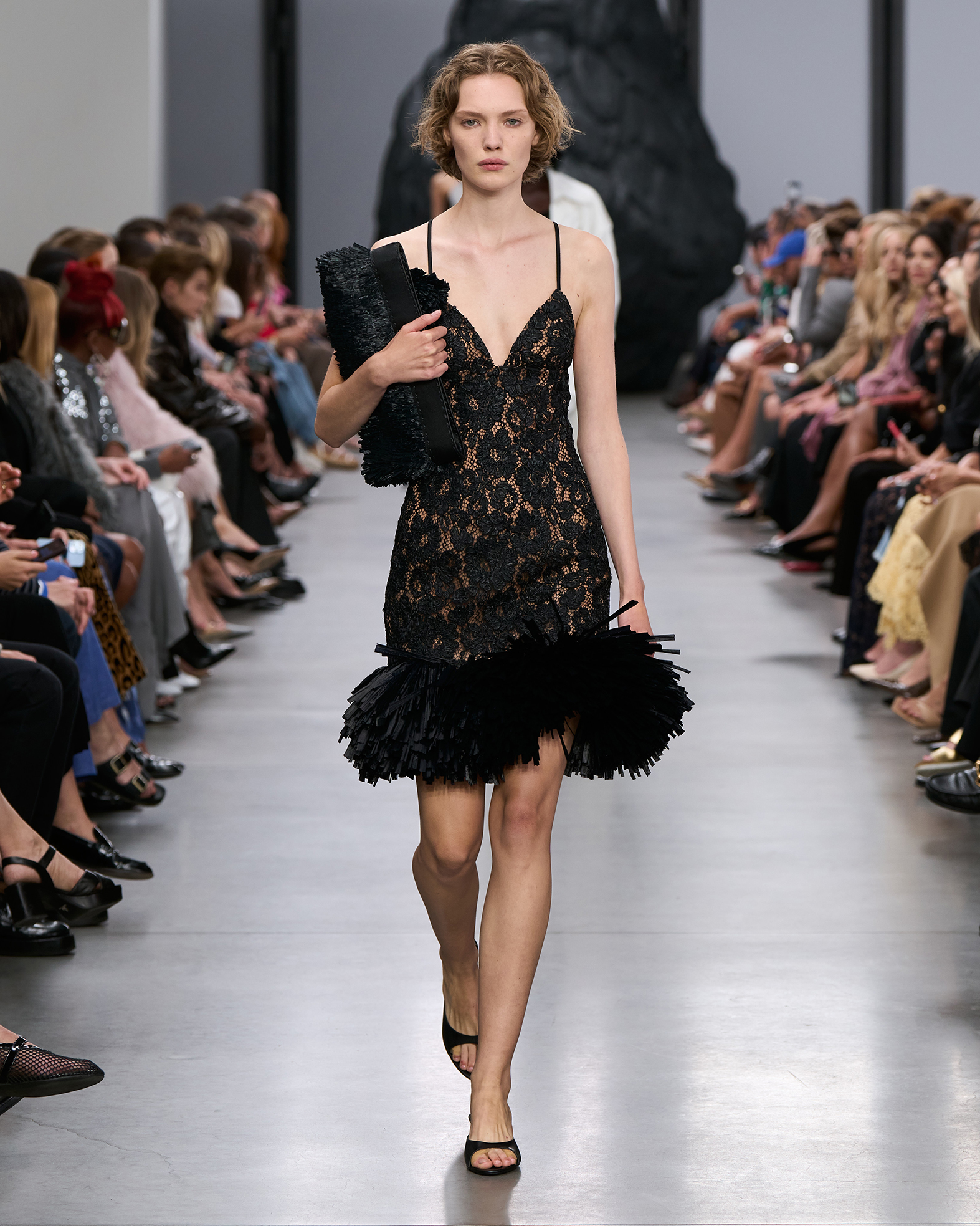
At the beginning of New York Fashion Week, Pieter Mulier said that for his latest Alaïa collection – presented at the city’s Guggenheim Museum – he had drawn influence from the tenets of American fashion: ‘a dynamic simplicity… an American ideology of dress of the body in motion, liberated’. It set the stage for a season of collections which saw the city’s big-name designers like Ralph Lauren, Tommy Hilfiger and Coach, as well as rising star Willy Chavarria, each riff on American archetypes in their own distinct styles. Though on Tuesday afternoon at The Shed at Hudson Yards on New York’s west side, Michael Kors – a longtime stalwart of the American fashion scene – seemed to divert from the prevailing mood, choosing instead to look towards the distant shores of Europe. In particular, Italy and its artisans, which Kors said he has now been working with on the production of his collections for close to four decades.
‘For a designer, the greatest thing is to find partners who can bring your ideas to life, which is what Italy’s artisans have done for us for 35 years,’ Kors explained. ‘This collection really highlights that workmanship, tailoring and handwork, the qualities that make a piece special and unique, and turn it into something you want to wear every day and own forever.’ Translated to clothing, this was a Korsian take on La Dolce Vita: sweetheart 1950s silhouettes, nipped waist skirts worn with matching bra tops, and breezy open shirting all featured, while moments of Italian craft came in fronds of raffia fringing, flourishes of lace and floral appliqué. ‘The dichotomies in the collection feel very Mediterranean to me, laid-back but luxurious, rustic but opulent, the sophistication of the city with the mood and attitude of a resort,’ said Kors, who amid a frantic run up to the US election (the first presidential debate would take place later that evening), seemed to be dreaming of escape.
Coach
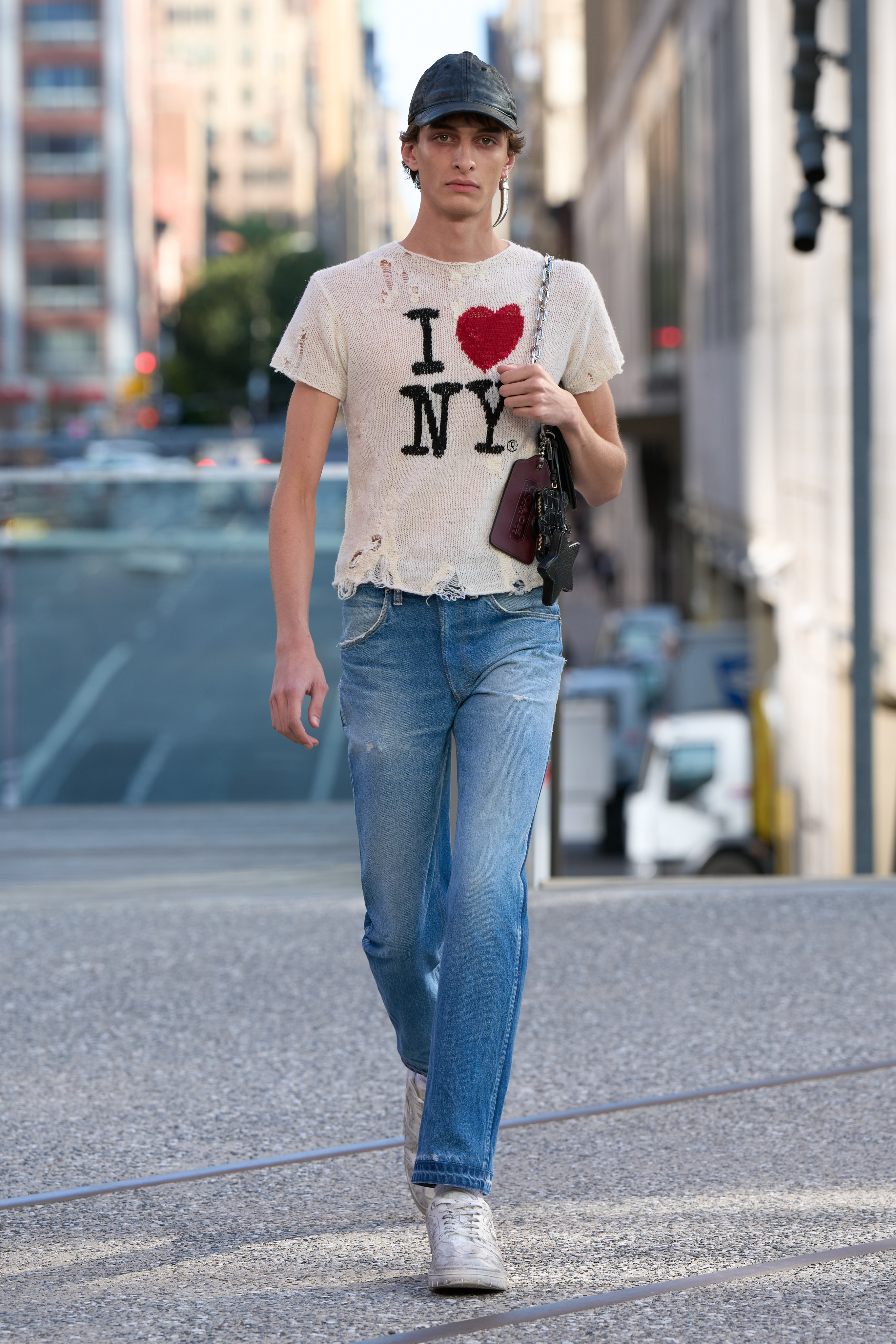
After a brief jaunt uptown last season, Coach’s Stuart Vevers returned to The High Line on New York’s west side, chosen by the British designer for its position in the heart of the city’s noise and bustle. ‘I wanted that urgency,’ Vevers said post-show of an energetic collection which centred on the ‘optimism of youth’, introducing a cast of rebellious young characters he imagined let loose in the city. ‘They are these characters who are taking American classics and reinventing them for today, and making them their own,’ he said, buoyed by a feeling he has gleaned from observing young people on the city’s streets. So there were graphic ‘I Heart NY’ T-shirts and sweaters daubed with drawings and doodles, crumpled satin debutante dresses and slouchy collegiate varsity jackets, alongside the requisite American denim and leather. ‘I’m really fascinated by how a new generation are discovering American classics for the first time,’ said Vevers. For handbags – still Coach’s best-known and high-selling category – Vevers here riffed on vintage clasp-closure handbags, some dainty and held with a small top handle, others blown-up in size and adorned with colourful stickers.
Tory Burch
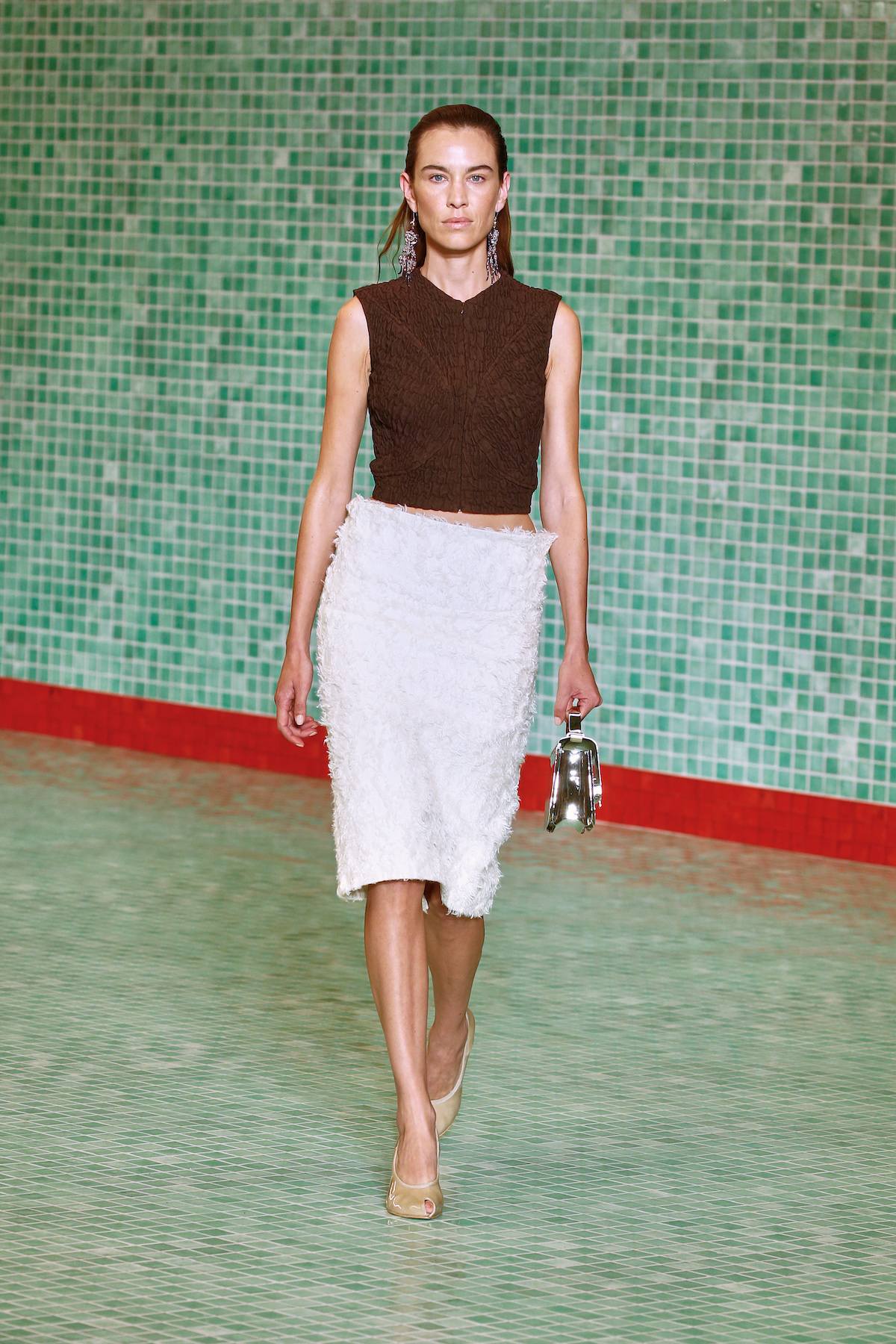
Growing up with three competitive brothers instilled within Tory Burch a lifelong love of sport, a fixation that the American designer brought to her S/S 2025 collection, staged at Brooklyn’s Skylight at The Refinery yesterday evening (the penthouse spot afforded expansive views of Manhattan at sunset through its curving greenhouse-like windows). ‘I’ve been obsessed with sport my whole life,’ said Burch after the show. ‘It’s the precision, the power, the solace. That was where the collection started. Then it was: how do you take that and not be literal?’ She did so with a razor-sharp focus on fabric and form: sharply cut swimsuits were adorned with sequins, tailoring and outwear came with knotted fastenings in a reference to martial arts uniforms, while skirts hovered away from the waist for an unexpected silhouette. With buzzy casting – including an appearance on the runway from Alexa Chung – and a packed front row, it more than continued the so-called Torynaissance which has seen the designer adopt a freewheeling approach to creation and attract a new generation of trend-hungry consumers. They will no doubt be delighted by the sculptural split-toe pumps and the multitude of riffs on the classic Tory Burch ‘Reva’ ballet pump, including a new mule style the designer picked out as her favourite of the season.
Tommy Hilfiger
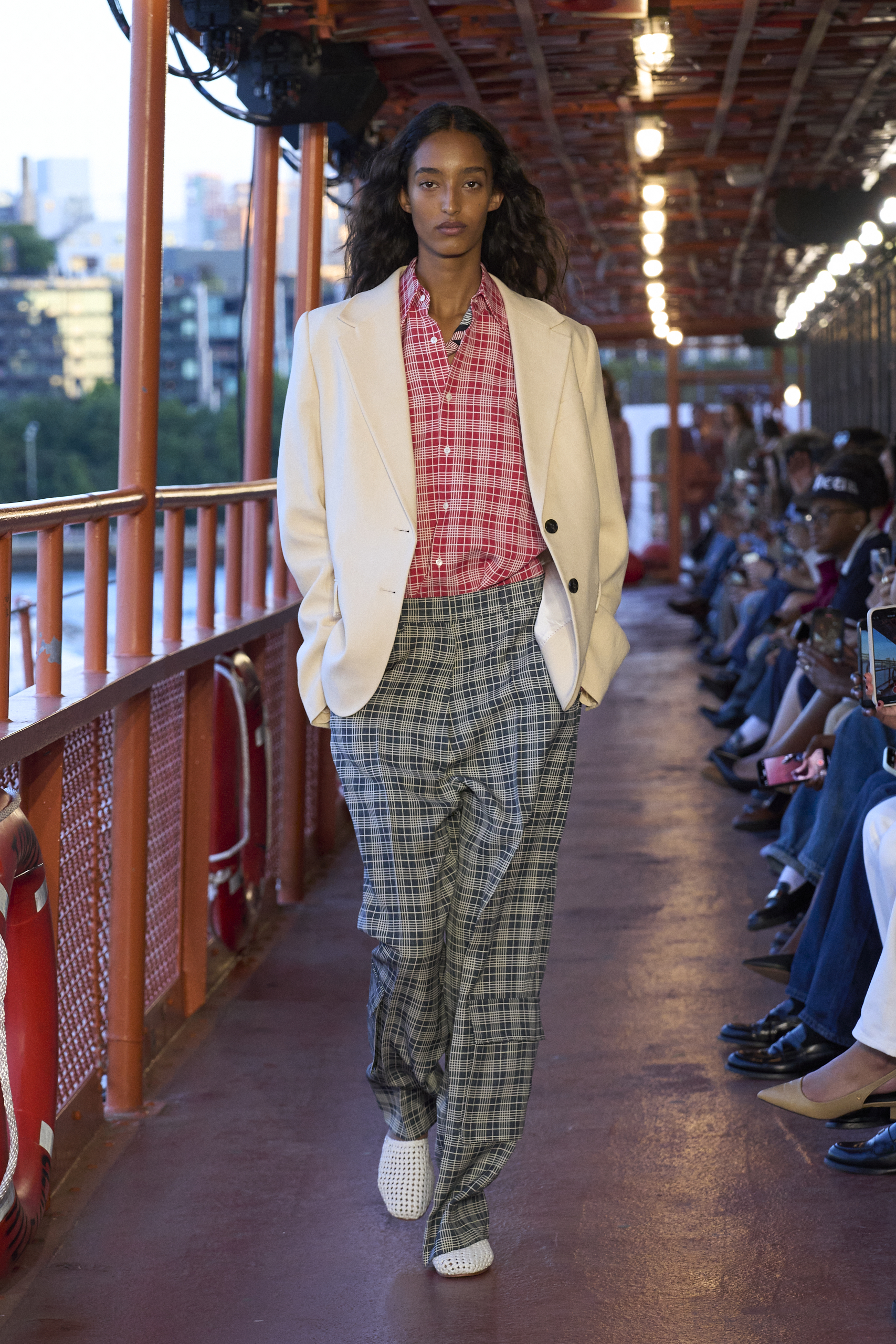
Tommy Hilfiger commandeered the John F. Kennedy, a former Staten Island ferry now owned by the comedians Pete Davidson and Colin Jost, for a good-mood S/S 2025 collection which continued his takeover of New York landmarks (last season, it was Grand Central’s Oyster Bar). Taking place as the sun set over the East River – and with views of the Brooklyn and Manhattan Bridges beyond – guests were greeted with boxes of popcorn and champagne, before settling on the decommissioned ship’s original seating for the show itself. Here, the designer said he was looking to ‘remix’ nautical and maritime codes, melding them with the all-American collegiate uniform for which he is perhaps best known. Like last season, there was a continuing shift towards timelessness – gone were the overt Tommy Hilfiger graphics of previous iterations of the brand, in were louche, elongated knits, breezy shirt dresses and polo shirts, and elegant, just-oversized tailoring, windbreakers and trench coats. A collegiate ‘TH’ motif, meanwhile, nodded towards the brand’s roots. Befitting the setting, it closed with a performance from native Staten Islanders Wu-Tang Clan seeing runway etiquette go out the window as guests ran from their seats to catch a glimpse of the group, who have been wearing Tommy Hilfiger since their founding in the 1980s.
Off-White
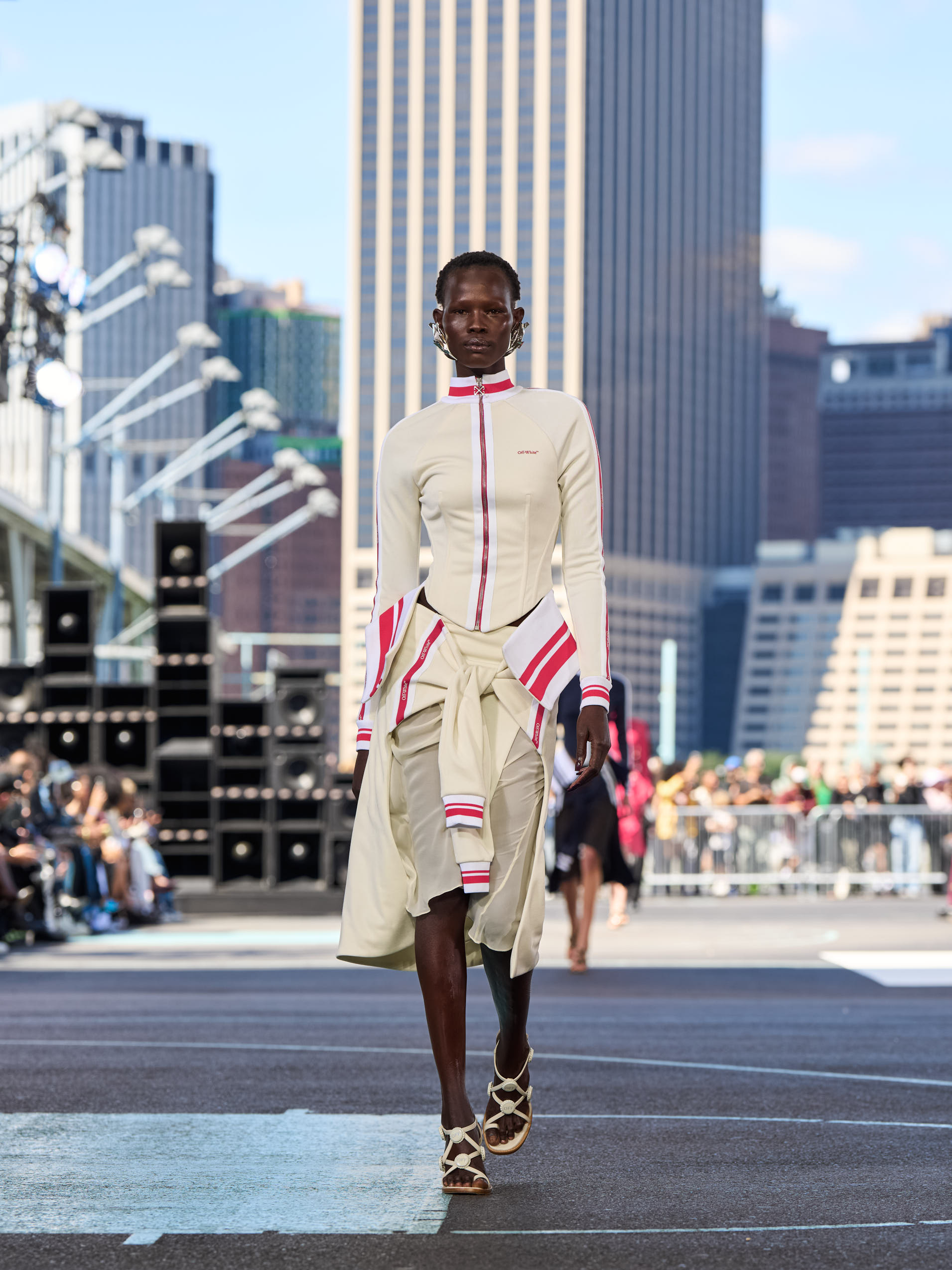
This season saw Off-White creative director Ib Kamara – who also works as editor-in-chief of Britain’s Dazed magazine – shift the Virgil Abloh-founded brand from Paris to New York. It speaks to the borderless approach Kamara, who was born in Sierra Leone and grew up in London, brings to the label, titling this collection ‘Duty Free’. ‘This collection was triggered by a trip to Ghana, the place where Virgil came from and the roots he cherished and constantly referred to in his work,’ Kamara explained. ‘ I was born in Sierra Leone, but our experiences were similar. I have vivid memories of what America, and New York in particular, represented in the collective imagination of Africans: a dreamland of utopias made real, a place of opportunities.’ Taking place at the community basketball courts of Brooklyn Bridge Park, it made the gleaming New York skyline beyond a potent backdrop for a collection which melded sleek American sportswear with what Kamara called ‘African futurism’. The latter came largely through flourishes of traditional embellishment and craft, including a collaboration with Nana Danso, a Ghanaian artist who here reimagined the brand’s signature arrows motif. ‘It is grounded in reality, with a dash of magic,’ said Kamara, noting the cultural juxtapositions made it his most autobiographical collection yet. ‘Bringing traces of my life journey within the creative process charges my work with the energy I want the Off-White community to perceive – pieces of clothing are way more than just objects.’
Khaite
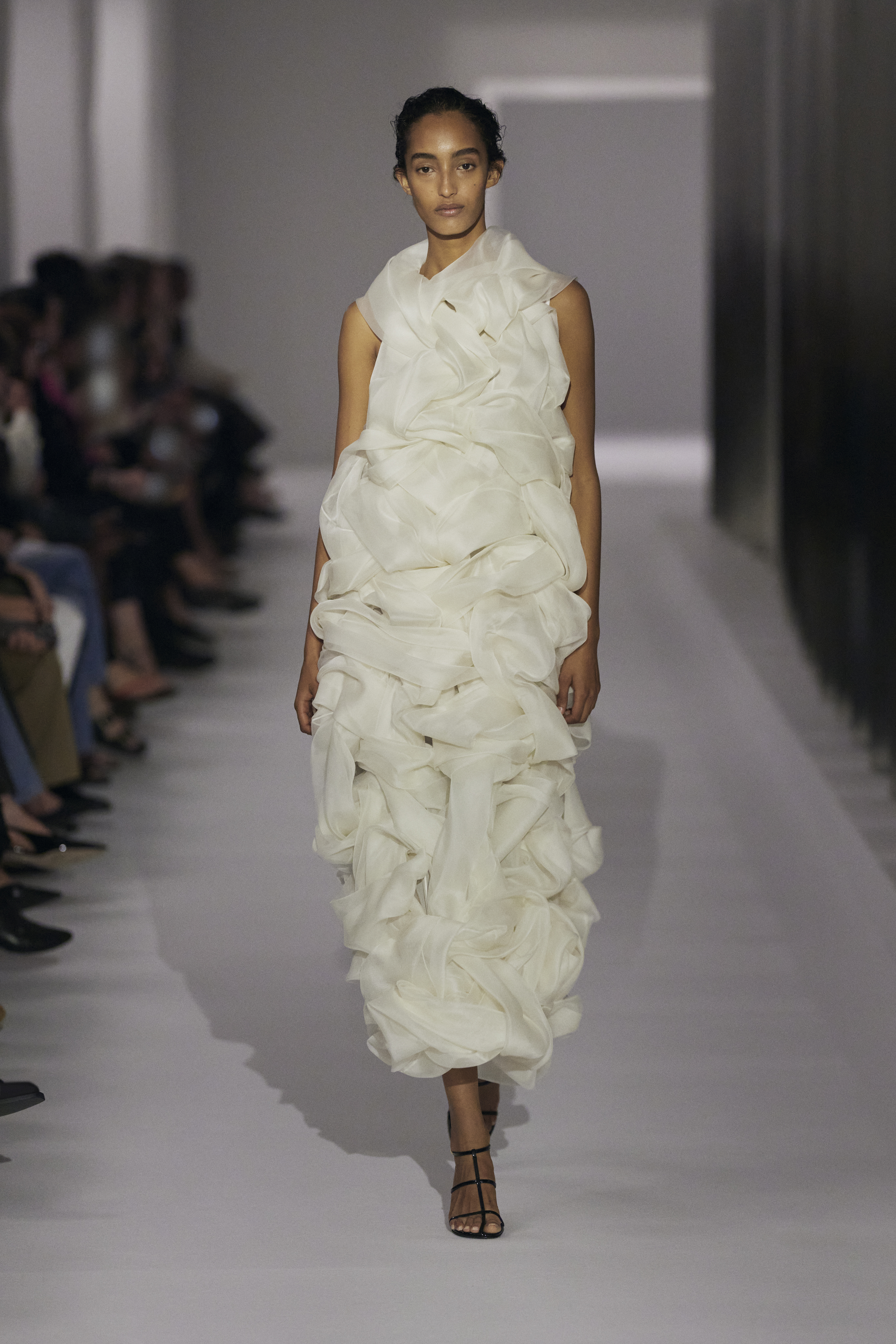
American label Khaite is largely known for its sleek, polished separates, which tend towards the dark and the moody (last season, the showspace at Pier 61 was pitch black, the colour of most of her bestselling pieces). This season, though, designer Cate Holstein noted a desire for lightness and softness, a move she credited in part to the recent birth of her son. As large metal panels rotated along the runway – the effect was something like the opening of an enormous Venetian blind – Holstein proposed a collection of enveloping but lightweight forms, from twisting knots of organza to wrapped shapes which recalled duvets or blankets, while a naive, almost childlike glamour was conjured in doily-like crochet, unravelling woven leather sets, or colourful patchwork handbags. Each was an exercise in experimentation from Holstein, who despite the wide appeal of her collections – and growing number of international devotees – is refusing to rest on her laurels.
Alaïa
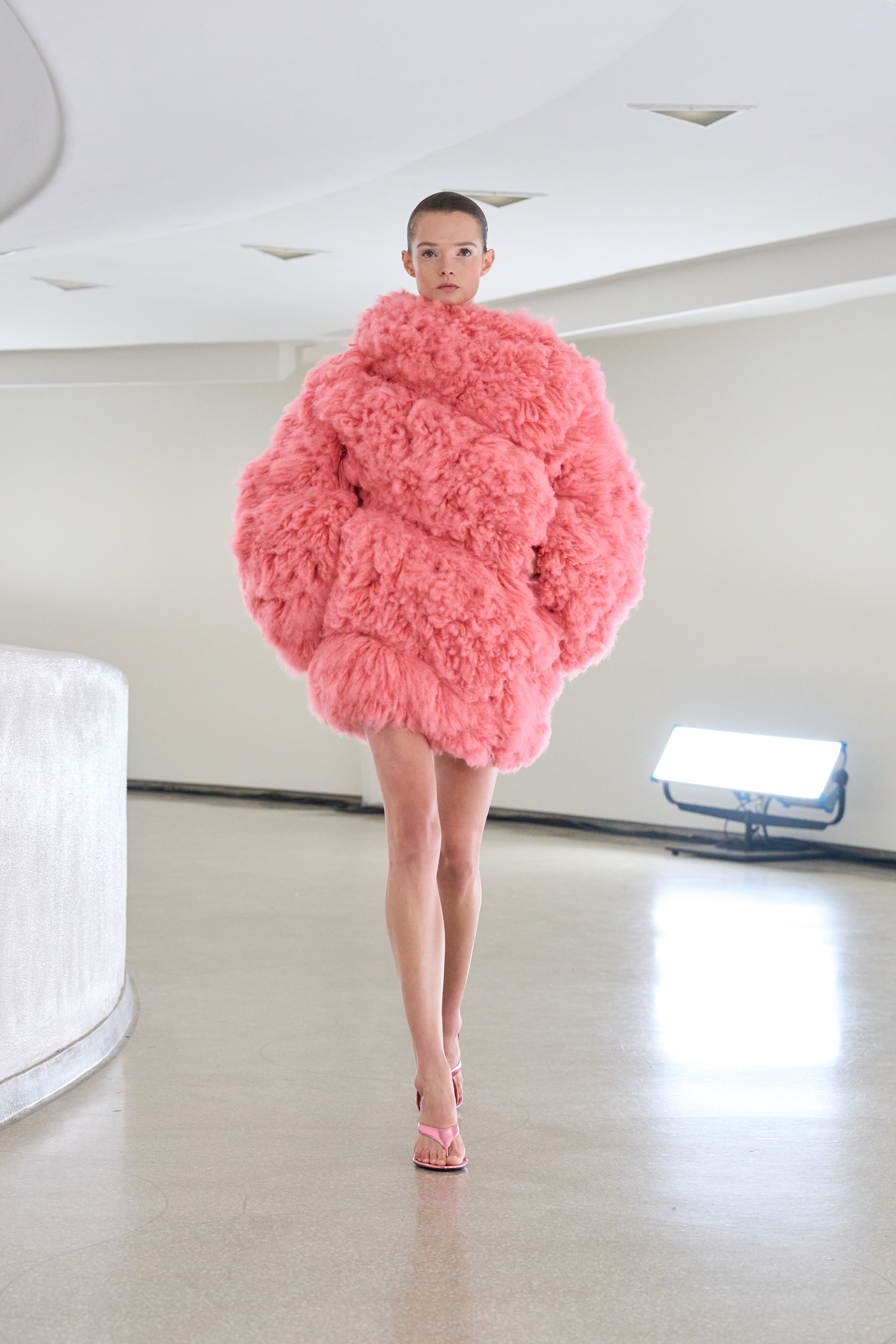
Pieter Mulier chose the atrium of New York’s Guggenheim Museum to stage his Winter-Spring 2025 show, shifting from its usual position during Paris’ haute couture week. In a personal letter distributed by the designer, Mulier explained that the transatlantic move was driven by ‘opportunity and obsession… the opportunity to stage a show in the Solomon R. Guggenheim Museum, and an obsession with the idea of American beauty’. Here too was a link between Mulier and house founder Azzedine Alaïa, who also travelled from Paris to New York in 1982, showing amid works at the Guggenheim Museum's then-temporary space in SoHo – ‘an exchange of art and fashion that was unprecedented,’ the designer explained. ‘For both for Alaïa and myself, America is a home away from home.’
And so followed a collection which saw Mulier muse on the idea of American beauty in his sleek, contemporary manner. References to American couturier Charles James emerged in the curved line of a padded jacket – a nod to James’ white satin eiderdown evening jacket of 1937 – while other pieces recalled the easy, flared line of Claire McCardell, a pioneer of American sportswear (Mulier also mentioned Adrian and Halston as touch points). Meanwhile, sinuous dresses which coiled around models’ bodies – seeming to defy gravity in their construction – were an evolution of those shown as part of the designer's Summer-Fall 2024 collection presented earlier this year in Paris. ‘Stripping away to a dynamic simplicity… some pieces are suspended, held in position by imperceptible internal structures, like magic tricks,’ said Mulier.
As models wove their way around the Frank Lloyd Wright-designed spiralling ramps, it made for Mulier’s most cinematic runway show yet, and a dynamic move onwards from the intimacy of his presentations at the house so far. ‘It is a celebration of an American ideology of dress, and through that of a spirit that can unite New York and Paris – of the body in motion, liberated,’ he said. ‘As Alaïa always has been.’
Willy Chavarria
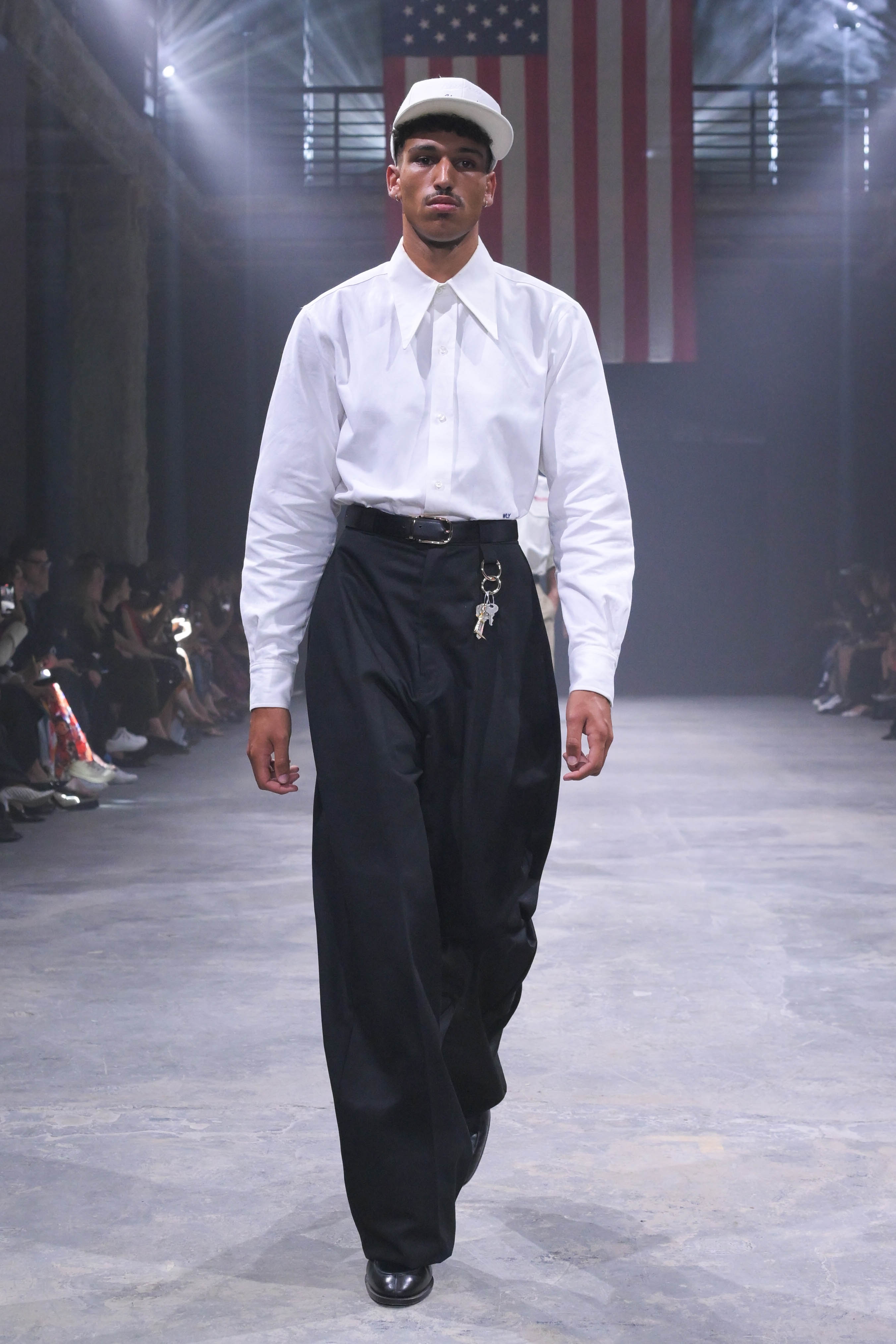
Willy Chavarria chose a disused bank on New York’s Wall Street, a potent symbol of American power and wealth, to present his latest collection, titled ‘América’. Under an enormous American flag and with a copy of the American Constitution on each sea, distributed by the ACLU, Chavarria said the collection was an attempt to celebrate the country’s immigrant communities, like those he grew up around as a child in Fresno, California with an Irish-American mother and Mexican-American father. ‘The community that I grew up in as a kid had a tremendous influence on not only my aesthetic and my work ethic, but also my view of what the country is that we live in, what it means to be American,’ Chavarria told Wallpaper’s Ann Binlot, noting that with this collection he wanted to instil their working uniforms – from hotel managers and farmer labourers to employees of electronics chain Circuit City – with a sense of ‘dignity’. As such, workwear was prescient, as was the idea of uniform, here riffed on in Chavarria’s distinct style – where silhouettes are often blown up in size – while a puffed Victorian sleeve was added to his play on the Carhartt jacket.
‘Given the time that we're in – around the corner from a major election – I wanted to shine light on the people who make this country work, and also celebrate immigration and those people who have built the country and are still the backbone of the country,’ he said, drafting Yahritza y Su Esencia, a sierreño trio, to open the liberatory show. It ended, though, with perhaps Chavarria’s most high-profile collaboration to date: an expansive Adidas Originals collection which closed with Olympics 100m gold medalist Noah Lyles walking the runway. It is the starting point of a democratisation of his label, which he hopes can span both $20-dollar vest tops and the pieces shown on the runway. ‘It's a different way of working and a different way of selling clothes that no one has ever really done under one label,’ he said. ‘But I absolutely believe that this is the time for it.’
Ralph Lauren
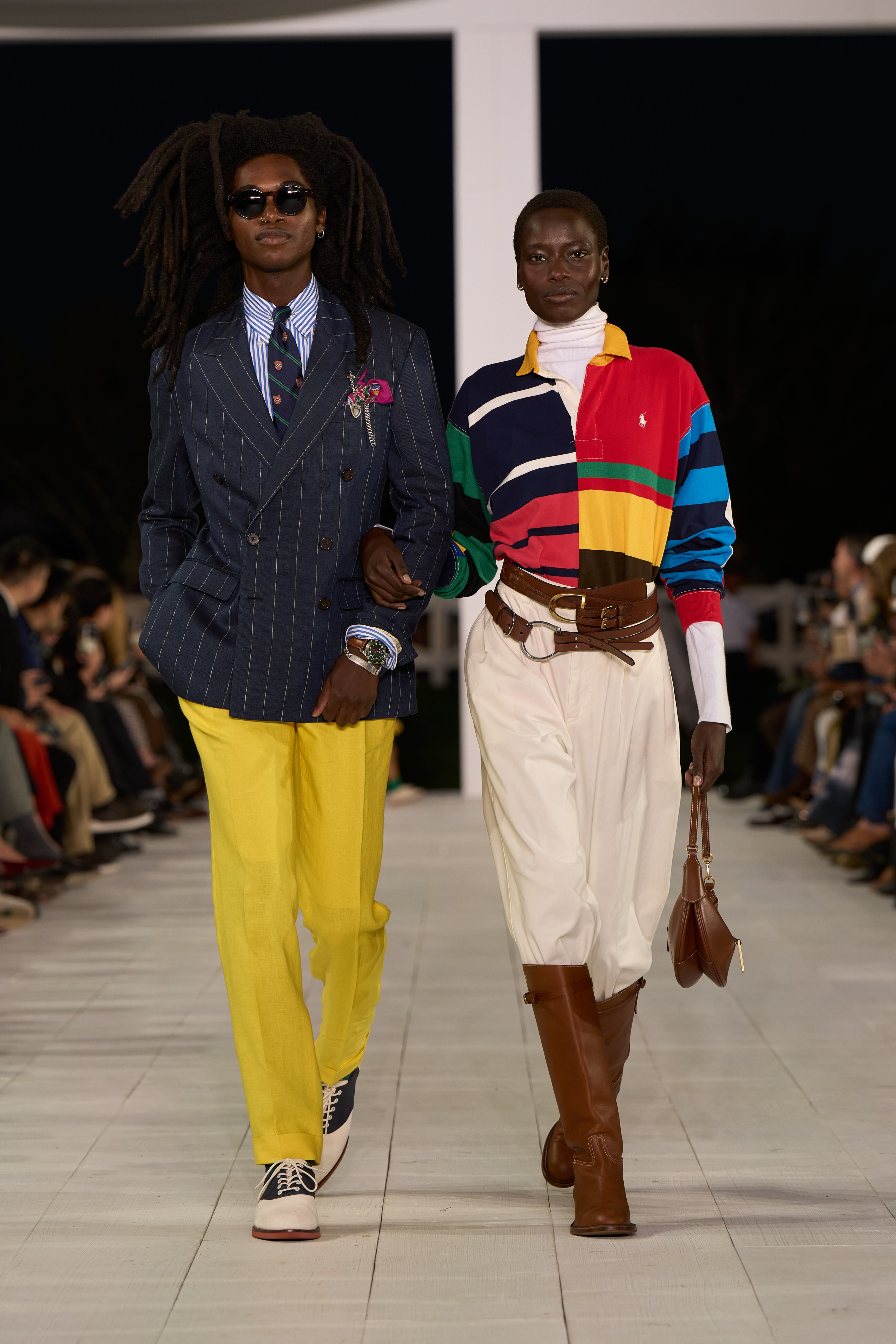
Ralph Lauren travelled to The Hamptons in Long Island to eke out the last of the dwindling summer season at the beachside locale long synonymous with Lauren’s all-American sense of style (it is also a beloved escape for the designer, who calls it his ‘home away from home’). Transporting attendees out of the city on the eve of fashion week proper (the week starts today, 6 September 2024) to an equestrian complex in the hamlet of Bridgehampton, the collection – presented in a specially erected tent open at the end to show the white picket fences beyond – was a strong argument by Lauren for honing in on what you do best. So there were gleaming tennis whites, colourful Polo rugby shirts, preppy blazers and caps, alongside a slew of breezy, bohemian-tinged eveningwear, worn by a cast which included Christy Turlington, Naomi Campbell and Liya Kebede (alongside some bouncing Ralph Lauren-clad kids). ‘The Hamptons is more than a place... it has been my home, my refuge and always an inspiration,’ said Lauren, who, after the show, opened up a recreation of New York’s Polo Bar for the starry guest list, which included Dr Jill Biden, Jude Law and Kacey Musgraves. It made for a joyful fashion week opener, and, with a busy week ahead, it was difficult to coax guests away and back to the city.
Proenza Schouler
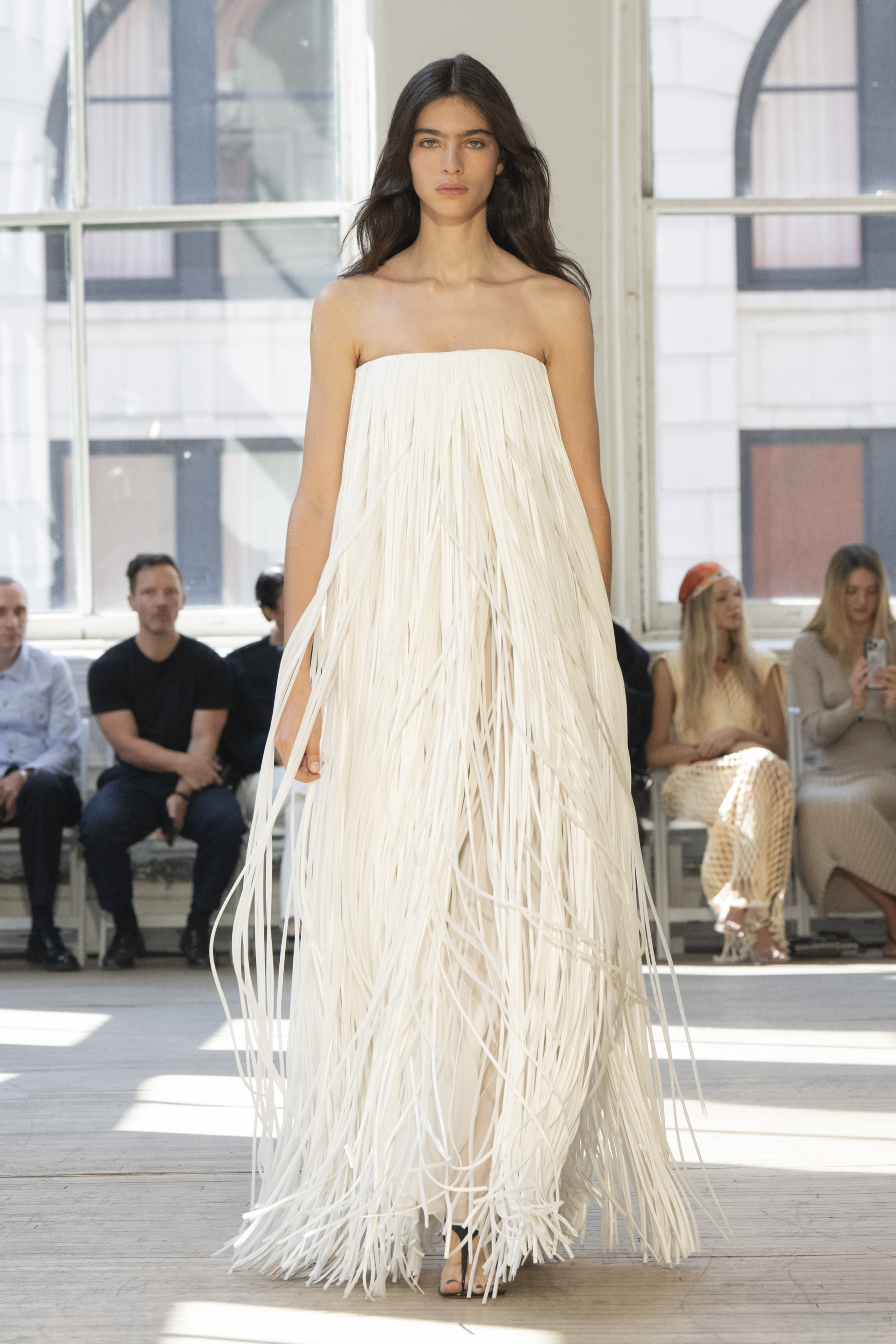
There was a shift at Proenza Schouler this season, and not simply because designers Jack McCollough and Lazaro Hernandez had chosen to move the show from its usual weekend slot to earlier in the week (as such it fell before New York Fashion Week officially began). After a mood of reduction in recent seasons – where streamlined silhouettes and pared-back design sought to strip garments back to their essence – the New York-based duo wanted to set a more radical course, quoting Pablo Picasso’s maxim that ‘every act of creation is first an act of destruction’. Here, as models stepped into the sunlit Tribeca loft, McCollough and Hernandez added layers of surface interest and play, using diaphanous, handkerchief cuts as canvases for patchworks of fabric, some printed, some striped. Other knit pieces fell away into disintegrating tassels, while bouncing fronds emerged from skirts and dresses. Despite this, there remained a seductive clarity to the pair’s vision, with a section of draped, gently plissé evening gowns – recalling the work of French couturier Madame Grès – providing a through line to the cool minimalism of their recent seasons.
Stay tuned for more from New York Fashion Week S/S 2025, on wallpaper.com and our Instagram, @wallpapermag.







